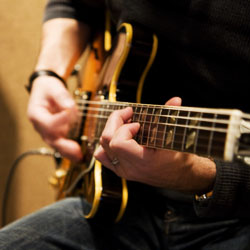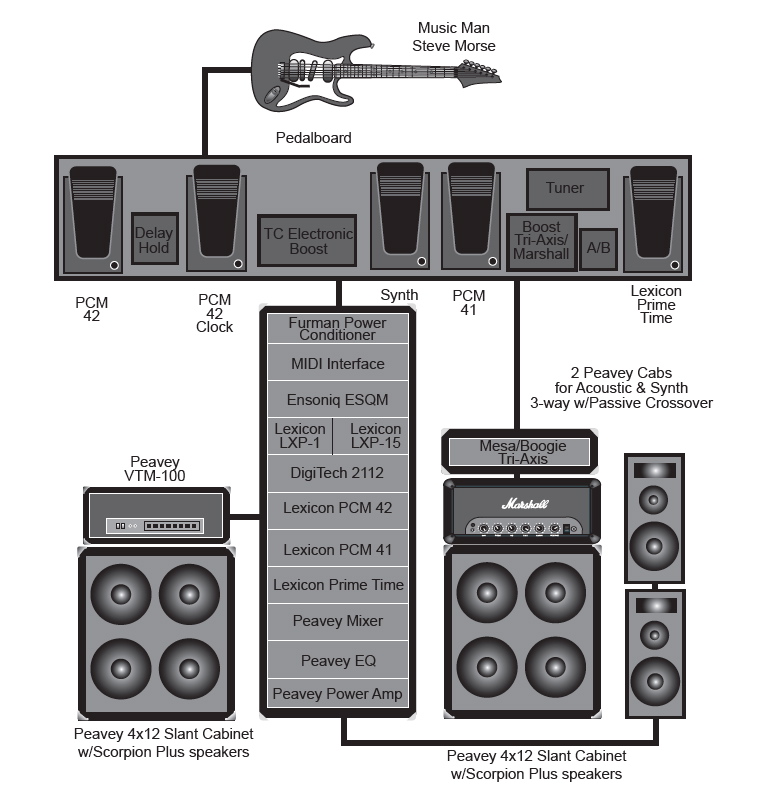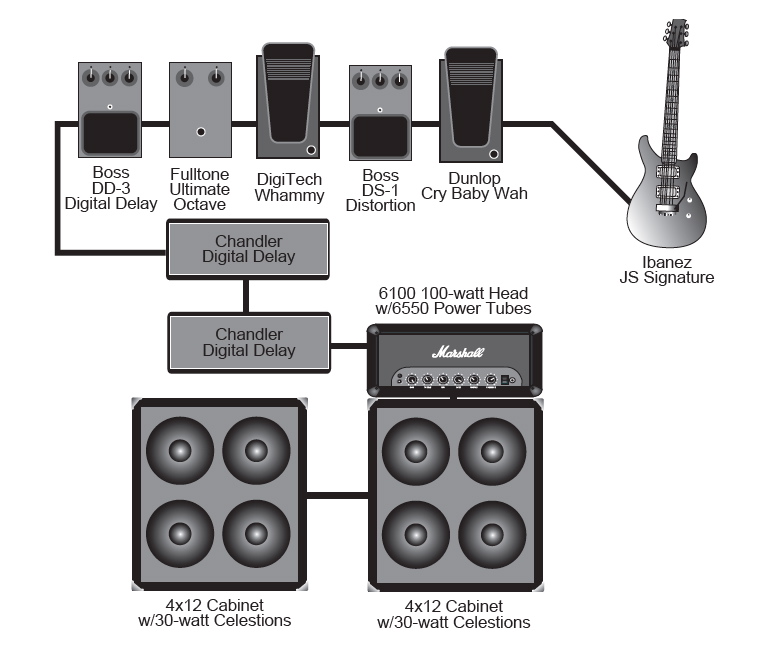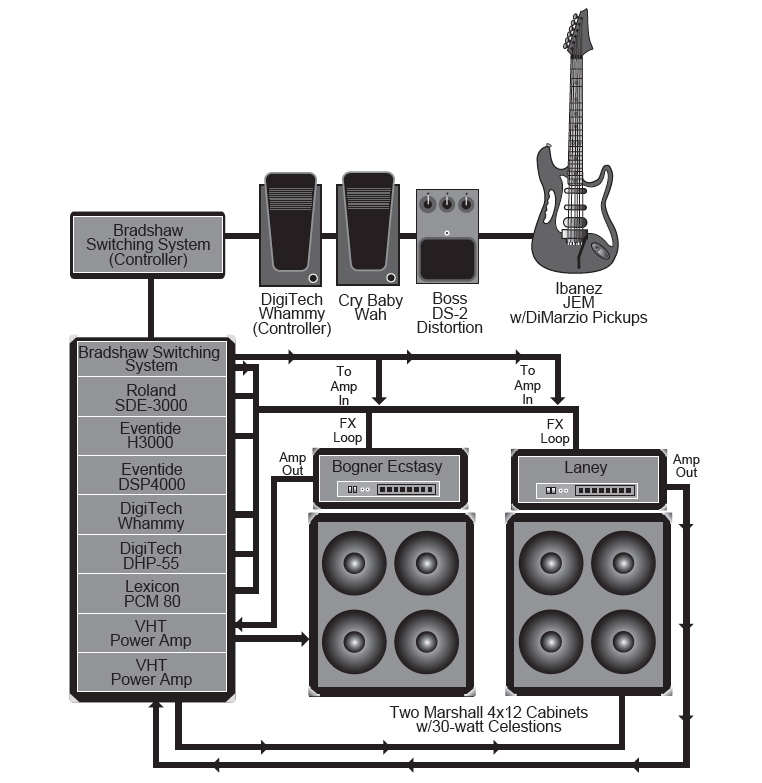
Steve Morse
With his three-pickup Ernie Ball Strat hybrid and an arsenal of effects and amps, Steve Morse is ready for any kind of sound—fusion, new age, blues rock, hot country, and classic metal (for when he plays with Deep Purple).
Morse first goes into a pedalboard, which has two boost switches: one feeds his Peavey VTM-100 amp, and the other goes into his Mesa/Boogie TriAxis preamp.
He uses a series of volume pedals to bring various elements in and out, such as the synth guitar volume, the delayed sounds generated by the various Lexicon devices in his rack, and an arpeggiator or clock from his Lexicon PCM42.
Morse favors Peavey 4✕12 cabs for his straight guitar sound, but also has two full-range three-way speakers for his acoustic and synth outputs.
Joe Satriani
Joe Satriani sets up his signal chain in a fairly orthodox manner: wah first, distortion second, and time-based effects after that, before finally going into the front end of a Marshall 6100 head, with 6550 power tubes substituting for the more common EL34s.
Satch’s setup is suspiciously Hendrix-like, having the wah in front and then a Fulltone Ultimate Octave later on in the chain.
But Satriani also makes expert use of delay (something Hendrix didn’t experiment with much), using three different delays.
First is the Boss DD-3, which feeds into two Chandler Digital Delays in series.
Steve Vai
Everything starts out normally enough in Steve Vai’s rig, with a distortion pedal, wah, and whammy pedal, but a switching controller steps in to turn this setup into something ingenious and unconventional.
The switching system selects between the various time-based effects in the rack while sending the pedaldriven signal to the amps’ inputs.
The amps’ effects loops bring in the effects via the send and return jacks, and the amps’ slave outputs go into two VHT power amps.



